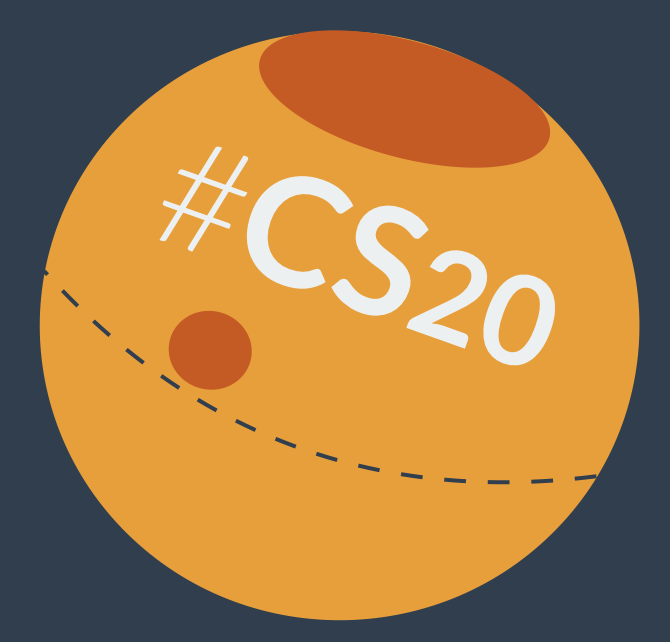I am a scientist and technologist living in Austin, Texas. My research centers on characterizing stars and exoplanets using probabilistic inference and machine learning. I’m a member of the Exoplanet Atmospheres research group led by UT Austin Professor Caroline Morley. My programs touch on quantifying stellar activity, detecting exospheres, and developing scalable spectral inference. We recently made a new interpretable machine learning framework for high-resolution spectroscopy, blasé. I also developed the muler, gollum, and ynot Python libraries, and have previously maintained lightkurve and Starfish. I extended Starfish to model starspots, protostars, brown dwarfs, and subgiants. I have previously worked at the Kepler/K2 Guest Observer Office at NASA Ames, and the Kavli Institute for Astronomy & Astrophysics in Beijing, China. My PhD focused on developing Silicon Diffractive Optics with nanoscience, including e-beam lithography at the JPL Microdevices Lab. Lately I am developing scalable techniques to overcome the daunting challenge of modeling substellar JWST spectra at their native spectral resolution and bandwidth.
igully [at] utexas [dot] edu
The University of Texas at Austin
Department of Astronomy
2515 Speedway, Stop C1400
Austin, Texas 78712-1205
An Interpretable Machine-learning Framework for Modeling High-resolution Spectroscopic Data
2022
Michael Gully-Santiago, Caroline Morley
Astrophysical Journal,
941,
2,
20 pages
Astronomical échelle spectroscopy data analysis with muler
2022
Michael Gully-Santiago, Jessica Luna, Caroline Morley, Kyle Kaplan, Aishwarya Ganesh, Erica Sawczynec, Joel Burke, Daniel Krolikowski
The Journal of Open Source Software,
7,
73,
4 pages
Placing the spotted T Tauri star LkCa 4 on an HR diagram
2017
Michael Gully-Santiago, Gregory J. Herczeg, Ian Czekala, Garrett Somers, Konstantin Grankin, Kevin Covey, J.F Donati, Silvia Alencar, Gaitee Hussain, Benjamin Shappee, Greg Mace, Jae-Joon Lee, T. Holoien, Jessy Jose, Chun-Fan Liu
Astrophysical Journal,
836,
2,
26 pages
Optical characterization of gaps in directly bonded Si compound optics using infrared spectroscopy
2015
Michael Gully-Santiago, Daniel T. Jaffe, Victor White
Applied Optics,
54,
34,
16 pages
High performance Si immersion gratings patterned with electron beam lithography
2014
Gully-Santiago, M.A; Jaffe, D.T.; Brooks, C.B.; Wilson, D.W.; and Muller, R.E.
Proc. SPIE
Near-infrared metrology of high-performance silicon immersion gratings
2012
Gully-Santiago, M.; Wang, W.; Deen, C.; and Jaffe, D.
Proc. SPIE
Confirmation and Characterization of Young Disk-Bearing Brown Dwarfs and sub-Brown Dwarfs
2011
Gully-Santiago, M. A., K. N. Allers, and D. T. Jaffe
Cool Stars 16
High-performance silicon grisms for 1.2-8.0 micron- detailed results from the JWST-NIRCam devices
2010
Gully-Santiago, M.; Wang, W.; Deen, C.; Kelly, D.; Greene, T. P.; Bacon, J.; Jaffe, D. T.
Proc. SPIE
The First SPIE software Hack Day
2014
S. Kendrew, C. Deen, N. Radziwill, S. Crawford, J. Gilbert, Gully-Santiago, M., and P. Kubanek
Proc. SPIE
New metrology techniques improve the production of silicon diffractive optics
2014
C. B. Brooks, Gully-Santiago, M., M. Grigas, and D. T. Jaffe
Proc. SPIE
Manufacturing of silicon immersion gratings for infrared spectrometers
2010
W. Wang, Gully-Santiago, M., C. Deen, D. J. Mar, and D. T. Jaffe
Proc. SPIE

Interpretable Machine Learning for Echelle Spectroscopy with blase
Recent innovations in machine learning (ML) have shown how powerful the technology can be in our everyday lives. Adapting ML to science has immense promise, but usually suffers from uninterpretability: Neural Architectures yield powerful predictions but cannot be easily interrogated for why they made such a prediction. Our open source blase framework incorportates the powerful autodiff and GPU support from PyTorch on an interpretable physics-based substrate to yield the best of both worlds: the speed, scalability, and flexibility of ML with the heritage of hundreds of years of physical chemistry.

Quantifying starspots and their implications for stellar ages
Starspots have occupied a major avenue of my recent research focus, leading in part to my work at Kepler/K2. Kepler researchers take for granted the mere existence of starspots as the dominant method of assigning rotation periods to stars. My major breakthrough on starspots came when I realized that starspots possess both the familiar “AC” signal, but also a less familiar “DC” signal, a part of starspot geometry that is always visible from the perspective of the observer.

Probabilistic spectral inference with modular extensions to Starfish
Echelle spectrographs like IGRINS possess an immense spectral grasp, presenting both a scientific competitive advantage, and an analysis challenge: “How to we leverage all of that data? How do you compare it to imperfect models?” For the last 8 years I have developed computational approaches to overcome those challenges. The Starfish technique emulates synthetic spectra from pre-computed stellar model grids to compare with IGRINS data in a probabilistic way. My work has centered around extending the code to model starspots, protostars, brown dwarfs, and subgiants.

The Jaffe Silicon Diffractive Optics Group has been making diffraction gratings out of monocrystalline silicon for over 4 decades. Silicon is an excellent optical material in the infrared because of its high (n = 3.4) refractive index, which shrinks Si immersed wavelength, and reduces the overall size (and cost) of an infrared spectrograph design by a factor of about 3 to 10. Weisong Wang and I custom-made the Si immersion grating for IGRINS.
blasé, An interpretable transfer learning approach to cool star échelle spectroscopy
July 5, 2022
Machine Learning Splinter Session, Cool Stars 21, Toulouse, France
Measuring fundamental properties of young stars
November 18, 2016
Columbia University Stellar and Planetary lunch talk, NYC, USA
Forward Modeling IGRINS Spectra with Starfish
November 12, 2015
High Resolution Spectroscopy with IGRINS Workshop, Seoul, South Korea
Data Science in Astronomy with Git and GitHub
January 31, 2014
Grad Student Postdoc Seminar UT Austin Astronomy, Austin, TX
Ideas for Metrology of Silicon Diffractive Optics
November 1, 2013
UT Austin Astronomy, Si Optics Group, Austin, TX
Zygo Interferometry of Echelle Gratings
November 10, 2013
UT Austin Astronomy, Si Optics Group, Austin, TX
Direct bonded Silicon Optics
November 11, 2013
UT Austin Astronomy, Si Optics Group, Austin, TX
SPIE 2012 Invited talk about Silicon Immersion Gratings
July 6, 2012
SPIE Astronomical Telescopes and Instrumentation, Amsterdam, Netherlands
McDonald Observatory Board of Visitors Invited Public Talk
February 11, 2011
UT Austin BOV meeting, ACES, Austin, TX